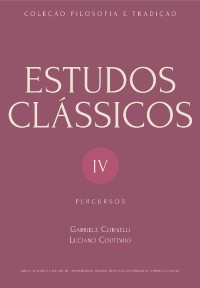Please use this identifier to cite or link to this item:
https://hdl.handle.net/10316.2/46086| Title: | Júlio César entre Suetônio e Bruno Heller | Other Titles: | Julius Caesar between Suetonius and Bruno Heller | Authors: | Fontoura, João | Keywords: | Rome;Julius Caesar;television drama;biography;Suetonius;Roma;Júlio César;teledramaturgia;biografia;Suetônio | Issue Date: | 2018 | Publisher: | Imprensa da Universidade de Coimbra | Journal: | http://hdl.handle.net/10316.2/46063 | Abstract: | Comparative Analysis of the Julius Caesar character in the fictional works of Suetonio (The Twelve Caesars) and Bruno Heller (“Rome”, the HBO series). Both are considered fictional works in distinct areas, thus based in verisimilitudes, not in History. History and Art do not have the same objectives, and since Aristotle these distinctions are clear. To clear up or expose facts is rarely a narrative objective: in this sense, some narratives can, at most, intend to grant meaning to the past of a culture. Every assumed fictional work will consciously portray the events that best define the characters and favors the narrative’s progression. These choices should, though, obey the characteristics of the environment from they are presented. Such characteristics demand their own forms of exposure, which do not follow the same rules in biographies and TV Dramas. “Rome” has the objective of entertaining a hypothetic average TV viewer from the 2000-2010s, while Suetonio’s biographies have the objective of teaching morality for a Roman reader from the II century. Caesar cannot be the same in the two works if their environment, objectives and audiences are different. Therefore, what take our interest in this article are the narrative choices in regards the interaction of the assumed Caesar personality with the politics events of his time, choices which are guided by specific objectives and limited by the verisimilitudes. Análise comparativa do personagem Julio César nas obras ficcionais de Suetônio (Os Doze Césares) e de Bruno Heller (“Roma”, série televisiva para o canal HBO). Ambas são aqui consideradas como ficção para diferentes meios e, portanto, baseadas na verossimilhança, não na história. História e arte não objetivam o mesmo, e desde Aristóteles essas distinções são claras. Esclarecer ou expor fatos raramente é um objetivo narrativo: nesse sentido, algumas narrativas podem, no máximo, objetivar dar sentido ao passado de uma cultura. Toda obra assumidamente ficcional retratará conscientemente os eventos que melhor definem os personagens e favorecem a progressão da narrativa. Essas escolhas precisam, porém, obedecer às características do meio em que são apresentadas. Tais características exigem formas próprias de exposição, que não seguem as mesmas regras em biografias e dramas televisivos: “Roma” objetiva entreter um hipotético “telespectador médio” dos anos 2000-2010, enquanto as biografias de Suetônio objetivam moralizar um leitor romano do século II. César não pode ser o mesmo nas duas obras se seus meios, objetivos e públicos são diferentes. Assim, são as escolhas narrativas a respeito da interação da suposta personalidade de César com os eventos políticos de sua época – escolhas essas guiadas por certos objetivos e limitadas pela verossimilhança – que nos interessam neste artigo. |
URI: | https://hdl.handle.net/10316.2/46086 | ISBN: | 978-989-26-1584-4 (PDF) | DOI: | 10.14195/978-989-26-1585-1_22 | Rights: | open access |
| Appears in Collections: | Estudos Clássicos IV: percursos |
Files in This Item:
| File | Description | Size | Format | |
|---|---|---|---|---|
| julio_cesar_entre_suetonio_e_bruno_heller.pdf | 557.09 kB | Adobe PDF |  |
Items in DSpace are protected by copyright, with all rights reserved, unless otherwise indicated.
